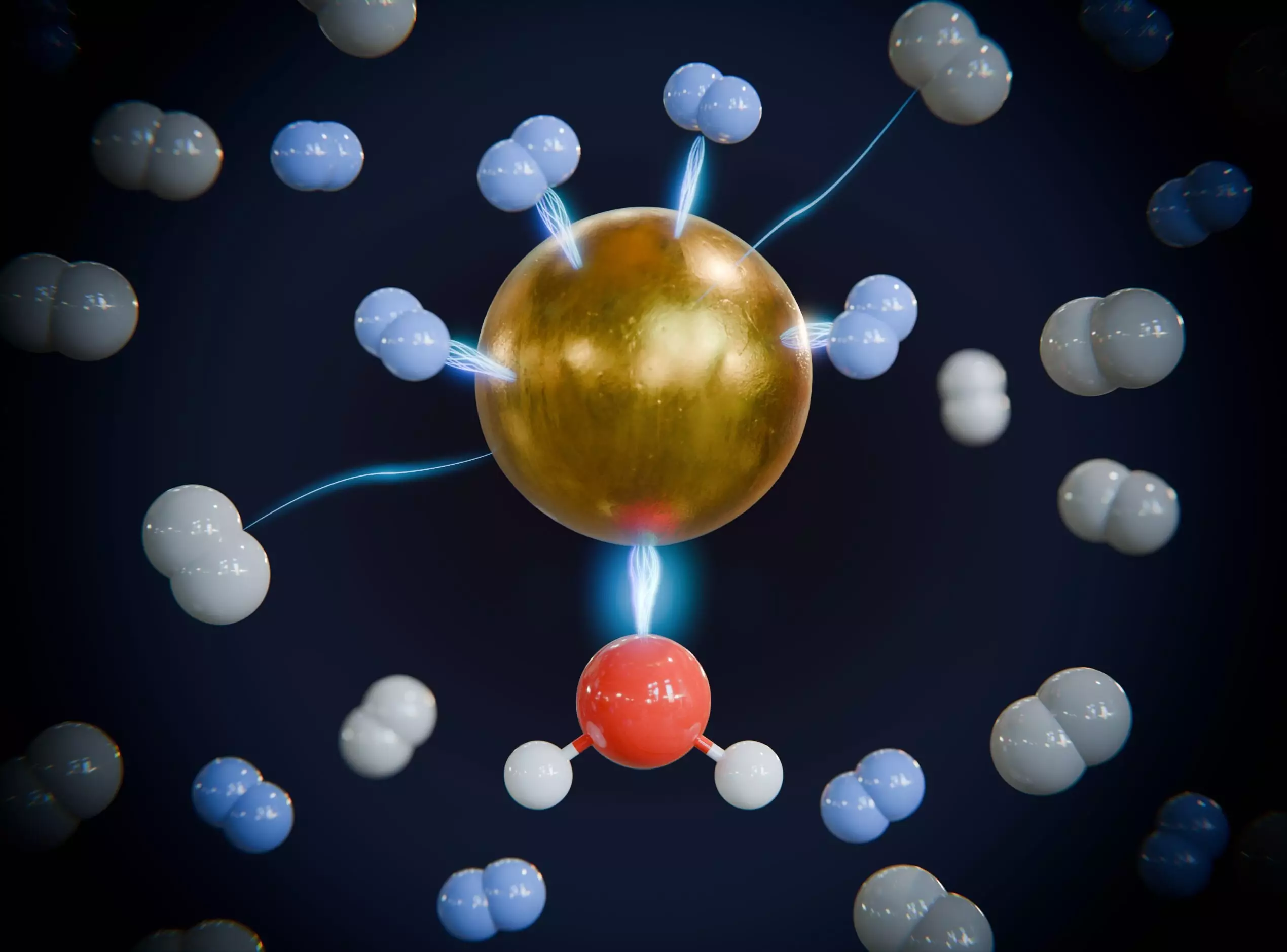As the world grapples with the urgent need for sustainable energy solutions, hydrogen stands out as one of the most promising candidates due to its abundance and versatility. The lightest and most abundant element, hydrogen has gained recognition for its potential role in the energy transition, especially in establishing cleaner energy alternatives to fossil fuels. With significant advancements being undertaken in hydrogen research, recent findings from an interdisciplinary team from Leipzig University and TU Dresden signal a breakthrough in the effective separation of hydrogen isotopes, a critical component in unlocking hydrogen’s full potential.
Hydrogen exists in three distinct forms, collectively known as isotopes: protium, deuterium, and tritium. Protium (hydrogen-1) is the most prevalent isotope, while deuterium (heavy hydrogen) plays an increasingly prominent role in various scientific applications, including the development of pharmaceuticals. Tritium is known for its applications in nuclear fusion—a sustainable power source that could revolutionize energy production if harnessed efficiently.
Traditionally, the separation of these isotopes has presented challenges due to their similar physical characteristics. Most current methods for isotope separation are energy-intensive and expensive, which hampers their scalability and practical application. This has left researchers seeking more efficient techniques that can be executed at room temperature, ideally improving both the purity of the isotopes and the economic viability of their production.
Breakthrough Achieved Through Innovative Research
The collaborative effort among researchers from Leipzig University and TU Dresden, as part of the Hydrogen Isotopes 1,2,3H Research Training Group, has led to crucial advancements in the quest for cost-effective hydrogen isotope separation. Their study, recently published in the prestigious journal *Chemical Science*, reveals important insights into the mechanisms that can enhance the efficiency of isotope separation.
Historically, the use of porous metal-organic frameworks (MOFs) had been recognized as a potential strategy for isotope purification, but effective separation had been limited to extremely low temperatures (around -200 degrees Celsius). The logistical and financial implications of maintaining such conditions have posed significant barriers to large-scale implementation in industrial settings. However, the researchers have now illuminated a path forward, demonstrating the possibility of achieving selective adsorption of hydrogen isotopes at room temperature, thus addressing one of the primary hurdles in hydrogen research.
At the core of this research is the principle of adsorption—the process wherein atoms, ions, or molecules from a gas phase adhere to a solid surface. The researchers, including doctoral candidates Elvira Dongmo, Shabnam Haque, and Florian Kreuter, explored the binding selectivity of hydrogen isotopes in greater detail. Their investigations utilized a combination of cutting-edge spectroscopy techniques, quantum chemical calculations, and chemical binding analysis on model systems to unveil the underlying principles dictating why certain isotopes exhibit a greater tendency to adhere to the framework material than others.
Led by Professors Thomas Heine, Knut Asmis, and Ralf Tonner-Zech, the research team made a pivotal discovery regarding the influence of the individual atoms within the framework compounds on the adsorption process. This newfound understanding enables targeted optimization of molecular frameworks, leading to materials specifically designed for high selectivity—even under ambient conditions. Professor Heine emphasized the significance of this progress, heralding it as a crucial step that could enable high-efficiency isotope separation techniques.
The implications of this research extend far beyond the laboratory. Enhanced methods for hydrogen isotope separation at ambient temperatures could establish an accessible pathway for the production of deuterium and tritium—elements that are becoming increasingly central to various fields, from pharmaceuticals to clean energy generation through nuclear fusion. Such advancements could provide a much-needed boost to the hydrogen economy, facilitating the shift toward cleaner energy sources and reducing reliance on fossil fuels.
As the world continuously seeks sustainable solutions to combat climate change, ongoing research efforts in hydrogen isotopes undoubtedly represent a critical chapter in the transition to a more sustainable energy future. With further refinement and industrial scaling of these technologies on the horizon, the dream of a hydrogen-powered world may become more attainable than ever.


Leave a Reply